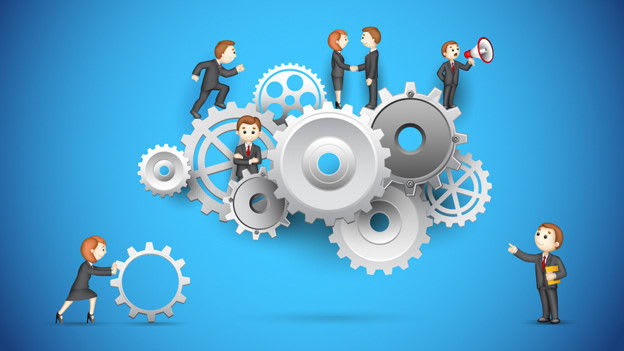Integrating well-being in the flow of work

While 2020 it’s been a gruelling year for all organizations, Workplace Well-being is one of the most important areas where the pandemic has fuelled progress. As the global health emergency became clear last year, most organizations acted quickly to help protect their workforce from the spread of COVID-19. They implemented all the appropriate health, hygiene, and distancing measures to keep people safe and well. There were various other support programmes that were launched specifically to protect the physical, mental wellbeing and livelihood of employees. Organizations have made extensive use of health technologies, informatics, and analytics. Workplace wellbeing has become a business priority.
Challenges
Now that employees transition from being fully remote to a post-pandemic future that includes return to office, research findings claim that employees are asking for workplaces that address mental, social, and physical wellbeing. With long-lasting work from home, taking heavy social and mental toll – relaxation spaces, healthy food services and outdoor spaces, for example, top the list in terms of what employees want (JLL Report, 2021). Another report (Forbes, 2021) has indicated that employees want to see the well-being gains they have enjoyed taken forward for the long-term – believing that they should become a part of the well-being package and indeed normal working life.
The question for employers is what do they do next? With return to normality being a lengthy process, how will businesses continue to manage uncertain and changing work dynamics and continue to focus on workplace well-being. Well-being has come to the forefront for many organizations in the light of the pandemic and the world’s new work reality. Yet many organizations struggle to move beyond health and wellness programs and truly make well-being a part of employee experience, weaving it into the fabric of the organization.
In the 2021 Deloitte Human Capital Trends survey, one important trend emerged: Integrating well-being into the flow of work will be vital in a post-pandemic world. Well-being was rising on the organizational priority list even before the COVID-19 pandemic. Some of the critical questions related to Well-being in the post pandemic world for the organizations are : How to weave well-being into the design of the workplace and employee experience instead of making it a “check the box” program? Are the well-being initiatives targeted in a way that allows the employee to embed their well-being as a priority in the context of work? How can we view decisions, revisit policies, make schedules, build teams, through a well-being lens?
The objective is to consider how supporting holistic employee well-being can be woven into work to allow employees to perform and feel their best by shifting from “wellness” being just a “program” to designing well-being practices and norms into the work itself.
How to design work to support employee well-being ?
There are few key elements to consider when approaching well-being by design for your organization. It will look different for each company, but these elements are a great place to start the process. These are small shifts or micro-steps – new ways to make decisions and approach work across all levels of the organization, including the individual, team, and total organization.
Are you listening to your Employees?
It all starts with good listening. Not just with surveys but asking and really listening to what challenges people have and observing those challenges at all levels. It’s important to seek to understand and use empathic listening and strategic feedback methods. If we don’t know what the real challenges are for the people, we can’t design solutions that will be effective for them. Organizations which have delivered successful wellbeing programs have used various listening strategies.
Policies and resources
Organizations can strengthen Well-being by making changes in policies and processes. Some of the examples may include: Adding well-being goals into performance reviews , Embedding wellbeing criteria in work scheduling or leadership evaluations. Reward those employees that model the behaviors. Recognize those employees who are taking ownership of well-being by being proactive and vocal about their well-being needs. Offer flexible schedules and remote working opportunities. Organizations have initiated policies to set boundaries in employee schedules to prevent burnout and overworking. Provide resources – expand mental health benefits, offer health/mental well-being coaching, etc.
It is Everyone’s Business
Well-being is not only the responsibility of HR if it’s a true organizational priority. Well-being touches so many areas of the organization, from facilities to marketing to training. For well-being programs to have a widespread impact, it can’t just be the responsibility of the HR team. Organizations should bring leaders from all areas to the table to make an impact.
Top Leadership Sponsorship
Support from Senior management through open dialogue and transparency is critical . It speaks volumes when leadership communicates that individual well-being is a priority and models self-care. If leaders are not afraid to ask for help or admit when they need support, it gives permission for others to do the same. Few other examples of behaviours modelled by senior leaders can be – checking in on colleagues, taking micro-breaks or facilitating healthy dialogue around team norms that support each other’s well-being. Leaders can also rethink standard meeting times and formats ( make meeting lengths 25 to 24 minutes to build-in recovery time , make only certain meetings video-based) and make it more facilitative towards wellbeing.
These are a few steps and small shifts – it doesn’t have to be a widespread organizational initiative, and it may just start within a small team and then move organizationally. The design of well-being into work is a practice that must be developed, strengthened and flexed over time to be effective. As work itself changes at a rapid pace, the ways that an organization supports individual and team well-being must adapt in tandem. It’s no longer about achieving work-life balance. The pandemic has shown us that well-being is not about balancing work with life but integrating them. When an organization is able to successfully design well-being into work, well-being becomes indistinguishable from work itself.
To conclude, many organizations are reimagining what work looks like to better support the employee as a whole. Employees need well-being built into the design of the jobs and the workplace more than ever before. We have not recovered fully and there is currently a backdrop of mental health challenges, social isolation needs, physical health needs . The door is open to think differently about how we design work. Have you started thinking about well-being by design for your organization?
















